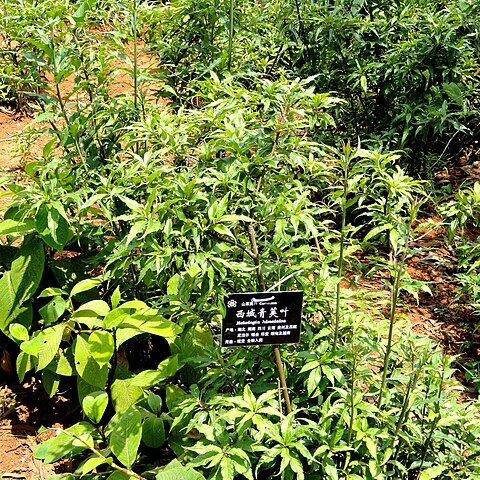Shrubs 2–3 m tall, deciduous; young branches yellow-brown, slender; leaf scars ± inconspicuous. Leaf petiole 1–5(–7) cm; stipules ca. 2 mm, not or 1–3-divided; leaf blade adaxially shiny green, abaxially light green, oblong-lanceolate, rarely oblanceolate or ± diamond-shaped, 5–11(–18) × 2.5–4(–5) cm, thickly papery, veins (5–)7–9, secondary and smaller lateral veins inconspicuous, base broadly cuneate to cuneate, margin glandular spiculate serrate, apex caudate-acuminate. Umbels between mid point and lower 1/3 of midvein on adaxial surface, rarely on upper part of young branches. Flowers of staminate umbels 8–20, pedicellate, 4-merous, rarely 3-merous, light green, 5–8 mm, pedicellate. Flowers of carpellate umbels (1–)3 or 4(or 5), pedicellate, 4-merous, light green, 5–6 mm; stigma 3-or 4(or 5)-divided. Fruit subglobose to oblong, ca. 5–8 mm in diam.; pedicel 1–2(–6) mm. Seeds 3 or 4, 3-or 4-ridged. Fl. Apr–May, fr. Aug–Oct.
More
A shrub which loses its leaves. It grows 2-3 m tall. The leaves are light green underneath. They are oblong and 5-11 cm long by 3-4 cm wide. Male and female flowers are on separate plants. The leaves are alternate and have teeth. The flowers appear on the leaves. The fruit is fleshy.
An undershrub of dense dark forests, especially in E. Nepal, 2100-2700 metres. Woods and margins of woods at elevations of 1700-3000 metres in western China.
More
It is a subtropical plant. In southern China it grows between 1,700-3,000 m above sea level.

